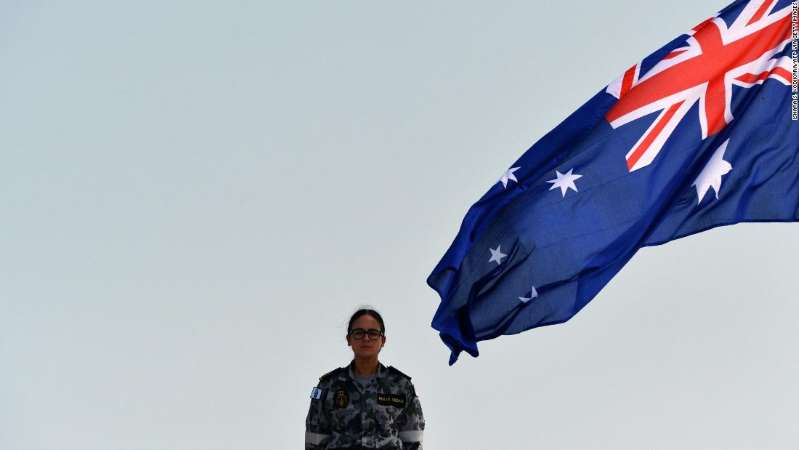By Ben Westcott, CNN–
The Australian government will spend $186 billion on its military in the next decade — and will buy long-range missiles — as it strengthens its defense capabilities amid rising tensions in the Indo-Pacific region.
Speaking at the Australian Defence Force Academy in Canberra Wednesday, Prime Minister Scott Morrison said Australia was facing its toughest international situation since the lead-up to World War II.
“We need to … prepare for a post-Covid world that is poorer, that is more dangerous and that is more disorderly,” Morrison said.
While Morrison avoided directly linking Australia’s defense budget to the growing threat from China, he named several regions where Beijing has become embroiled in territorial disputes: on its Himalayan border with India, and in the South China Sea and the East China Sea.
Morrison said the “risk of miscalculation and even conflict” was growing and called the Indo-Pacific region the “focus of the dominant global contest of our age.”
Rory Medcalf, head of the National Security College (NSC) at the Australian National University, said the new strategy was preparing for a future dominated by an aggressive China and a less reliable US partner.
“This is all about China’s assertive use of its power and the way in which China has essentially abused the window of Covid-19 to intensify its assertiveness,” he said.
Ships, stores and satellites
The 2020 Defence Strategic Update, released Wednesday, outlined a roughly 40% increase in spending over the next 10 years, compared to what was earmarked for the decade ahead in 2016.
The ramped up budget will increase Australia’s ability to defend itself in its backyard through better-equipped naval and air forces, and by building up its munitions and fuel storage capabilities.
An estimated $800 million has been earmarked for buying from the US Navy the AGM-158C long-range anti-ship missile, which can travel up to 370 kilometers (230 miles).
The government will also be exploring the possibility of an Australian-operated satellite network, reducing the country’s current dependence on the US network, and extending its radar system to monitor Australia’s eastern approaches.
“That means that the Australian government is convinced that it will be looking at an increased Chinese military presence off our east coast in the South Pacific,” said Medcalf, who helped advise on the 2016 Defense White Paper.
In June, Australia signed two bilateral military agreements with India in the “first step in deepening of the defense relationship” between the two Indo-Pacific powers, as China took an increasingly aggressive approach in the region, according to statements from both countries.
There were rumors in 2018 that Beijing was in discussions with the Pacific nation of Vanuatu to build a military base in its territory, and the Chinese government’s reach in the region has only continued to grow during the pandemic.
However, some experts were skeptical of Morrison’s claim that Australia’s acquisition of a “long-range strike” missile would provide a “strong, credible deterrent.”
Sam Roggeveen, director of the Lowy Institute’s International Security Program in Sydney, said that he was concerned any moves toward long-range strike capability could destabilize regional relationships, especially with neighboring power and regional partner Indonesia, and further antagonize China.
“Anything we can throw at China they can throw at us, and then some,” Roggeveen said.


Leave A Comment
You must be logged in to post a comment.